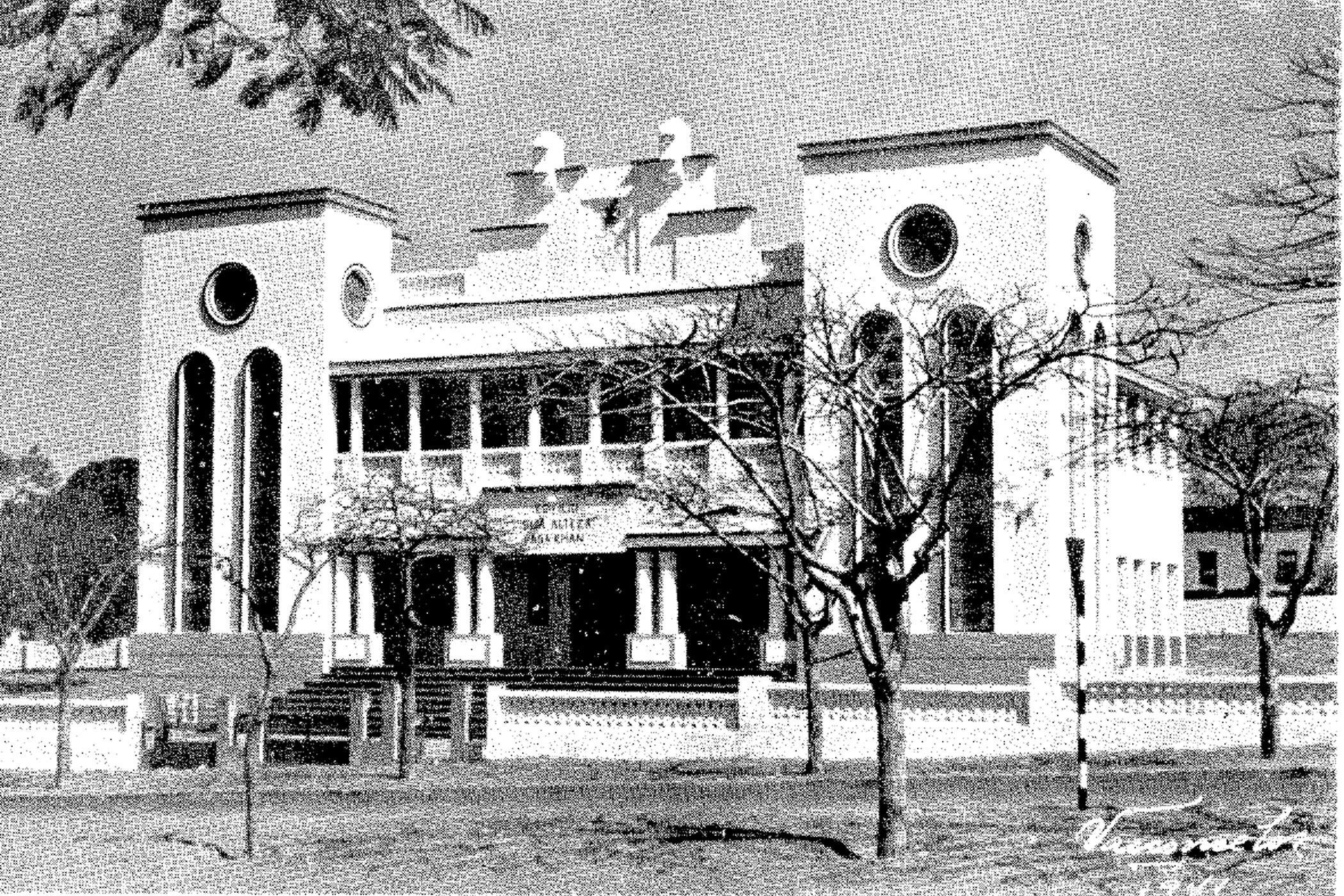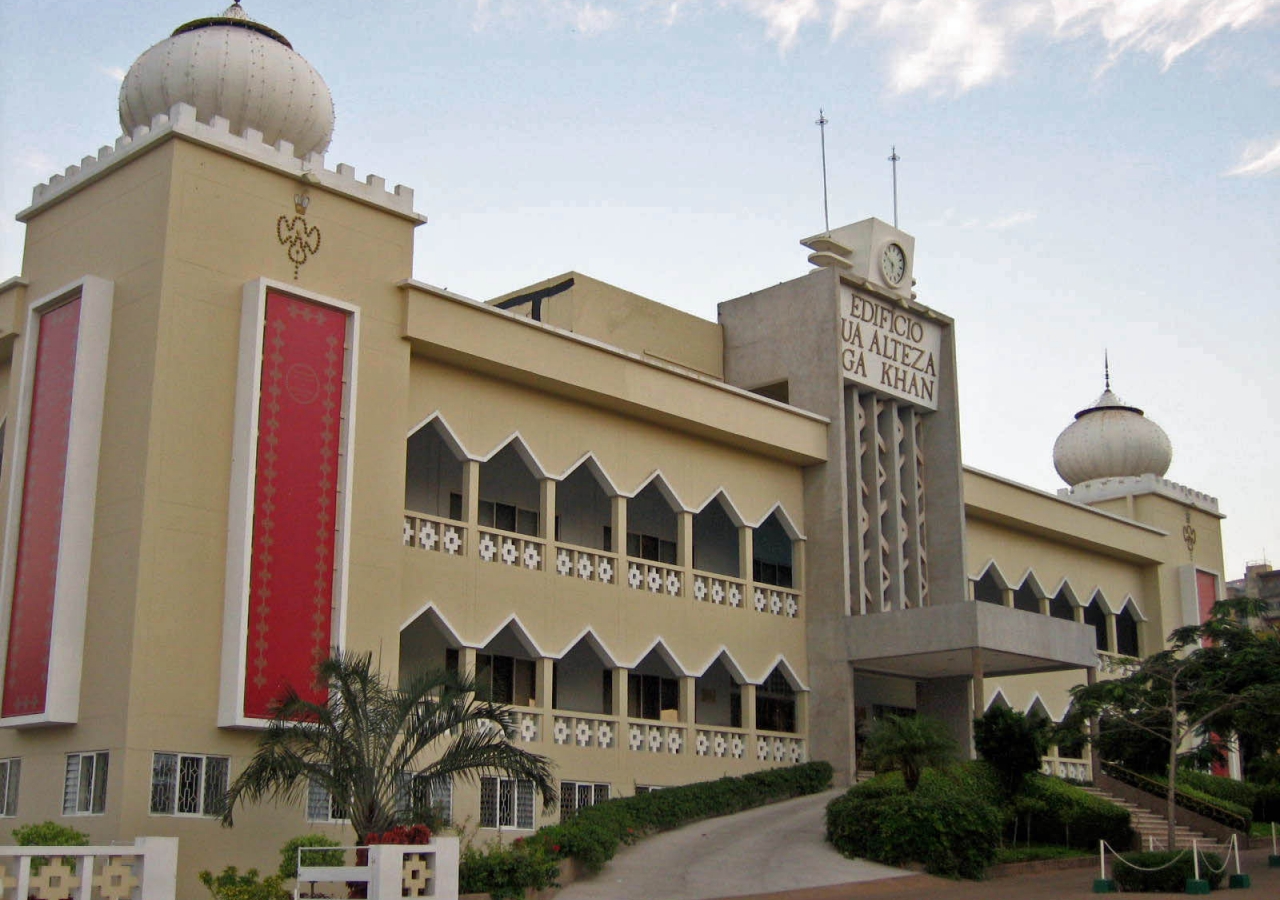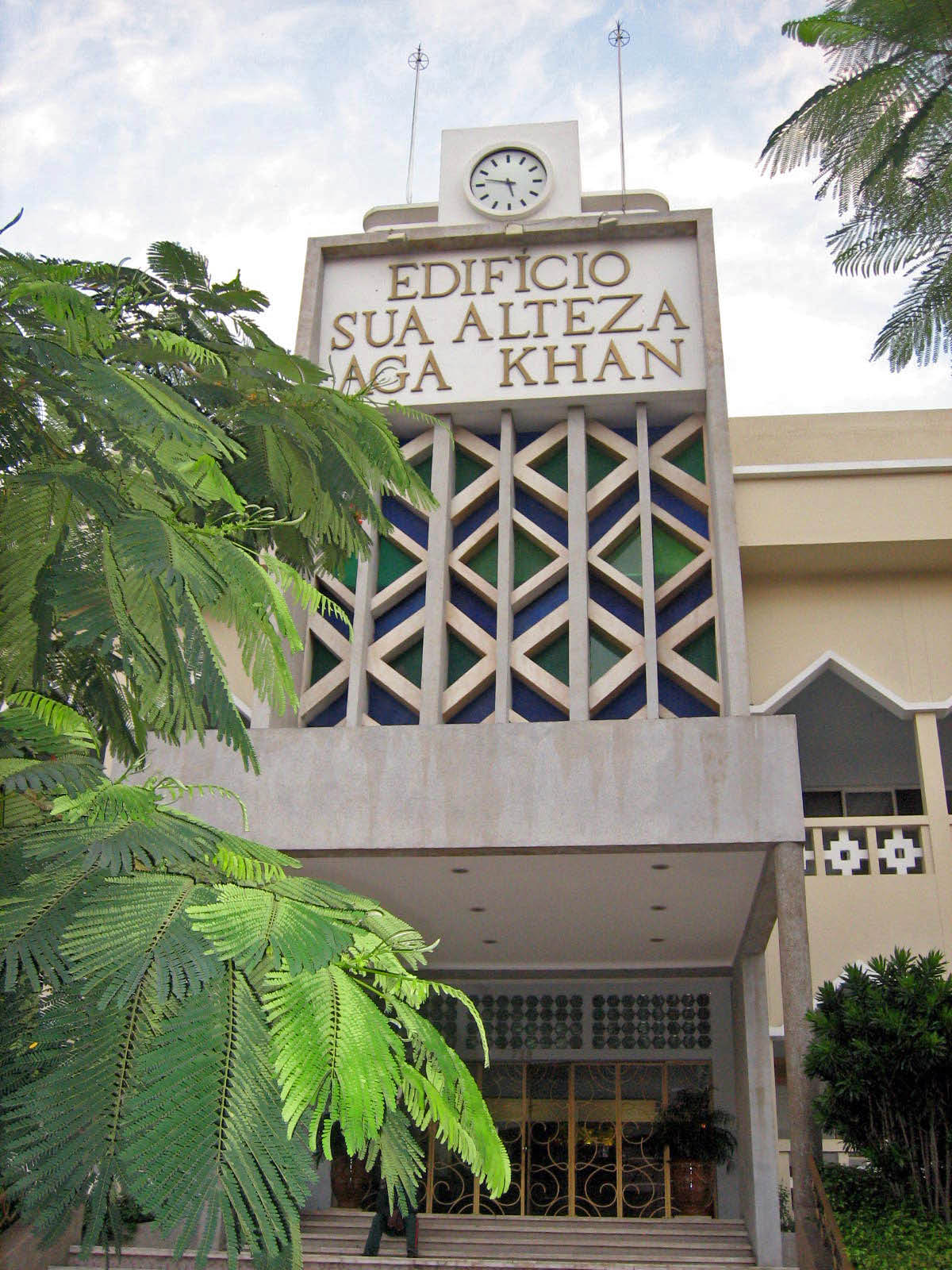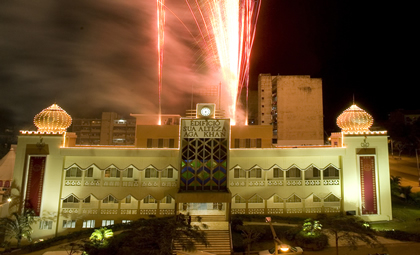At the heart of the port city of Maputo, capital of Mozambique, stands a building that testifies to the long history of the Ismaili Muslim community in the region. The Maputo Jamatkhana is located a short distance from the heart of the old city's baixa (commercial area). Flanked by two intricately carved glass-wall minarets, the concrete structure is easily identified by the words Edificio Sua Alteza Aga Khan (The Building of His Highness the Aga Khan) that adorn the central clock tower.
Around the same time as Ismailis began to migrate to other parts of the East African mainland, the community also established itself in present-day Mozambique. Most of the earliest settlers came from the Indian subcontinent and were engaged in trading activities. They were initially located on the Island of Mozambique and surrounding areas and Antonia Enes (Nampula) in the north of the country. In the early part of the twentieth century, the community also began to settle in Lourenço Marques (Maputo) and engage in trading industries such as clothing and food. With the growth of the Jamat came the establishment of institutions to facilitate social and economic progress. Although many left the country in the 1970s, recent years have witnessed a resettlement of Ismailis in Maputo.
 The Jamatkhana in Lourenço Marques (Maputo) circa 1941, was described by Mawlana Sultan Mahomed Shah as the best in Africa. Source: “The Aga Khan and Africa” (Diamond Jubilee souvenir, 1946?)
The Jamatkhana in Lourenço Marques (Maputo) circa 1941, was described by Mawlana Sultan Mahomed Shah as the best in Africa. Source: “The Aga Khan and Africa” (Diamond Jubilee souvenir, 1946?)The first Maputo Jamatkhana was built in 1941 and inaugurated by João Tristão de Bettencourt, then Governor General of Mozambique, who also gave it the name Edificio de Sua Alteza Aga Khan. By 1963, the Jamat had grown and it became evident that a larger Jamatkhana would be needed. A committee was formed for the new project that included Fransisco F. Saldanha, renowned engineers, Carlos Doria Nobrega and Morgado, and the master handiwork of Joaquim da Silva Duarte. The Jamatkhana extension was inaugurated in 1968 by a new Governor General, Dr. Baltazar Rebello de Sousa.
The structure is timeless in its design and beauty. Through the main doors, visitors are beckoned to the courtyard, where water can be heard trickling gently from its fountains. On either side is a prayer hall, and a library and office space. The building's hallways are lit by sunlight that streams-in through stained glass windows. A cool sea breeze wafts its way through the tranquil spaces, providing fresh air and a respite from the tropical heat.
By night, the Jamatkhana becomes a spectacular vision. Its minarets are lit with strands of miniature bulbs and the outline of the structure cast against the velvet black sky is breathtaking. On special occasions, as fireworks are launched from the rooftop, one is reminded of the Jamat's rich heritage in this unique African country.
Additional photographs of the Maputo Jamatkhana can be viewed in the gallery.










